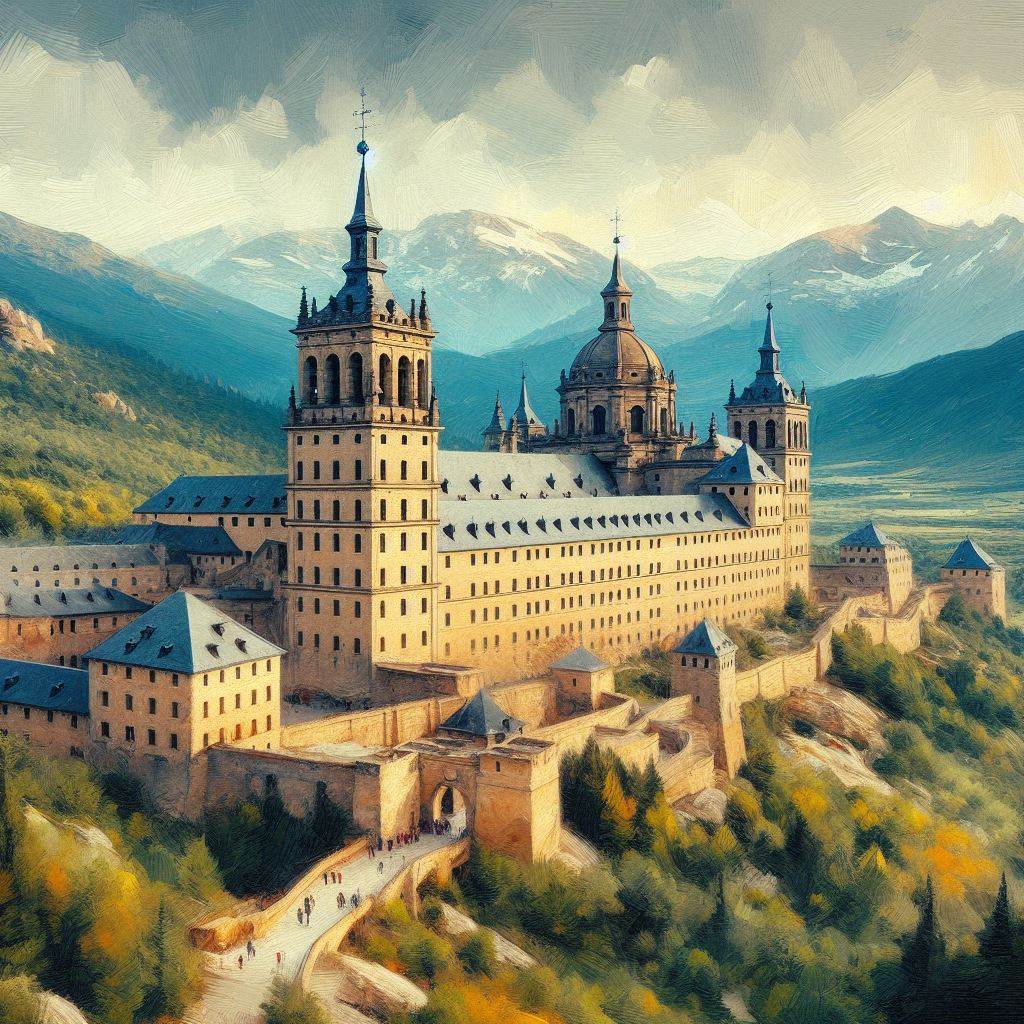El Escorial was the residence of the king of Spain during the reign of Philip II, who reigned from 1556 to 1598. This site was declared a World Heritage Site by UNESCO in 1984, and it is often mentioned as the most popular attraction in Madrid (more than 500,000 visitors a year). It is though important to know that El Escorial is located 45 kilometers outside Madrid. The easiest way to reach El Escorial is by joining a tourist bus, but this can cost quite a lot of money.
A cheaper solution is to travel to Moncloa (using the metro in Madrid), and take a bus from there to San Lorenzo la El Escorial. This bus ticket costs around 5,50 Euro and from the bus stop it takes 5 minutes to walk to El Escorial. The entrance fee into El Escorial is 14 euros for adults. Inside you can mostly see tapestries and paintings, and get quite a good feeling of what El Escorial looks like on the inside.
As you visit the area, it is also recommended to visit the “Valley of the Fallen.” This monumental memorial is a short drive from El Escorial, and it honors those who died during the Spanish Civil War. The colossal cross and basilica are remarkable. It is also worth visiting a local restaurant to taste local food and see what it is like outside the Spanish capital.
El Escorial
28200 San Lorenzo de El Escorial
El Escorial pictures



A short history of El Escorial
Would you like to get a deeper understanding of why El Escorial was built and what has happened to the building throughout history? Here you have a short, yet more thorough, version of the history of El Escorial than what you found in the introduction of this article.
El Escorial, officially known as the Royal Seat of San Lorenzo de El Escorial, is a grand and historic complex located near Madrid. Built during the 16th century, El Escorial has played a significant role in Spanish history, serving as a royal palace, monastery, and mausoleum.
The construction of El Escorial began in 1563 under the orders of King Philip II of Spain. The primary purpose was to create a monumental structure that would serve various functions. It was designed as a symbol of the Catholic faith, a center of learning, and a residence for the Spanish monarch.
Architect Juan Bautista de Toledo was responsible for the initial design, and later, Juan de Herrera took over. The result is a remarkable example of Renaissance and Herrerian architecture. The building features a distinctive granite facade, symmetrical layout, and a combination of religious and secular spaces.
Throughout its history, El Escorial witnessed important events, including royal ceremonies, political decisions, and cultural activities. It played a crucial role during the Spanish Golden Age, fostering intellectual and artistic endeavors.
El Escorial was declared a UNESCO World Heritage Site in 1984, recognizing its architectural and historical significance. Visitors today can explore its rich history and experience the cultural legacy it represents.
What is the purpose of El Escorial?
El Escorial serves multiple purposes within its vast complex:
- Basilica: The impressive basilica within El Escorial is dedicated to St. Lawrence and serves as a place of worship.
- Royal Apartments: El Escorial was intended to be a royal residence, housing the king’s apartments, ceremonial rooms, and a library.
- Monastery: A significant part of El Escorial is dedicated to the Hieronymite monks, with a monastery that includes living quarters and a tranquil cloister.
- Pantheon of Kings: One of the most notable sections is the Pantheon of Kings, a vast mausoleum where Spanish monarchs, including Philip II, are buried.
- Library: El Escorial boasts an extensive library containing a vast collection of manuscripts, books, and historical documents.
The complex stands as a testament to Spain’s rich cultural and historical heritage. Its grand architecture, diverse functions, and role in shaping the nation’s history make it a must-visit destination for those seeking to understand the legacy of Spain’s royal past.
